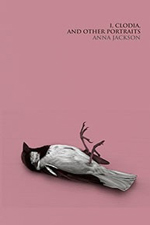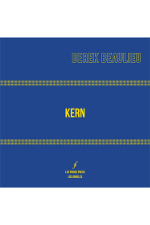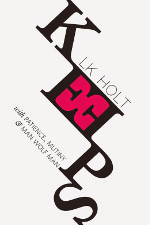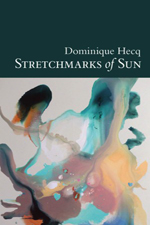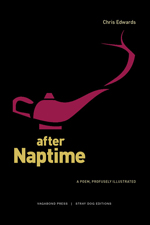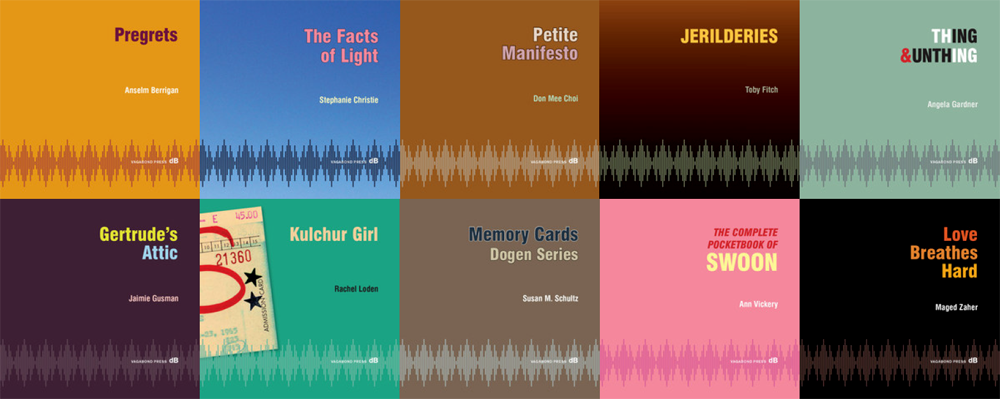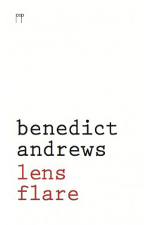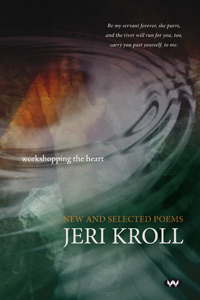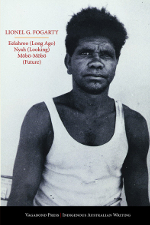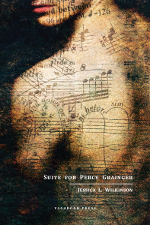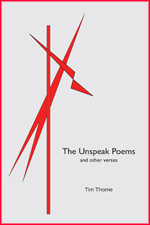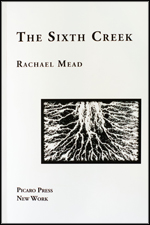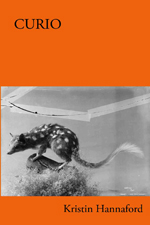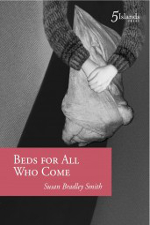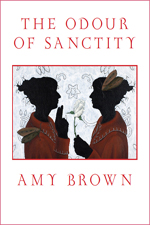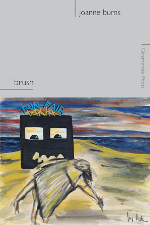BOOK REVIEWS
Review Short: Anna Jackson’s I, Clodia, and Other Portraits
Early in this collection, Clodia demands to be ‘loved by one of the new poets’ (4). Instead of beginning with the poet’s invocation of a muse, the muse of I, Clodia seems to summon the poet. Over 34 pages, Jackson imagines Clodia Metelli, the witty, promiscuous Roman aristocrat generally believed to have been the subject, ‘Lesbia’, of Catullus’s love poems – his interlocutor – her voice dovetailing easily with his. This biographical sequence is followed by another, observing an unnamed photographer during ‘the worst disaster of her career –/ this photographing of faces, this creation/ of ‘portraits’’ (41). The poet’s potential as portraitist and biographer preoccupies I, Clodia.
Review Short: Derek Beaulieu’s Kern
I must admit: the first time I flipped through Kern and looked at the various swirling typographic entities, two thoughts jumped into my head; how similar the pages looked to work by Australian book artist Lyn Ashby, and the other was jealousy at how much vintage dry-transfer lettering (Letraset) Canadian poet Beaulieu obviously has access to.
Anne-Marie Newton Reviews L K Holt
Melbourne poet L. K. Holt’s third collection, Keeps, is an expansively intertextual and complexly layered work. Published as part of a substantial volume that includes the reissue of her two earlier collections, this is often dense and intellectually oriented poetry. There is, however, an intriguing personal thread interlacing the ensemble, wherein the poet – perhaps more so in this collection than in her earlier works – offers a view into some of her deeper existential concerns.
Experimental Review: Dominique Hecq’s Stretchmarks of Sun
At primary school we had a class called Scrapbook. We drew, coloured, traced, glittered, and glued material cut from magazines, to create new pictures uniquely our own.
I scrapbook.
You scrapbook.
S/he scrapbooks.
We may have made the noun into a verb, but it still has chalk-mark of the hobby or junior project.
Unlike collage, montage, even bricolage – those vaguely French-sounding words associated with literature, film and fine art.
Experimental Review: Chris Edwards’s After Naptime
PREFACE Page references to Chris Edwards’ “A. N.”* are imposed—i–viii (Front cover–Contents), 1–22 (Text), ix–xiv (Sources–Back cover)—according to its Contents’ functionally reflexive bracketing.
Dan Disney Reviews the deciBels Series
These ten tiny tomes each speak (squawk, swoon, glitch, muse, lyricise, confess) of how there is something not ticking precisely inside the reality machine. Or perhaps these books shine light onto how we’ve all gone slightly spectral within our anthropocenic phantasmagorias, lost and unmoored in an experiment that’s become dreadfully strange. Some of these books turn exclusively toward the world, others perhaps come from particular critical engagements; each serves to extend conversation both on what poets do, and what poems are for.
Review Short: Benedict Andrew’s Lens Flare
Lens Flare is a collection of poems – the first, as far as I can tell – written by a theatre director more accustomed to staging Chekhov in New York or Verdi in Denmark than to publishing poems in Australian journals. I opened the book expecting to find that slightly off-key poetry written by accomplished practitioners of an allied practice – this could also be song-writing, fiction, even painting – whose singular depth of involvement is unquestioned, but is not in poetry.
Review Short: Jeri Kroll’s Workshopping the Heart: New and Selected Poems
Workshopping the Heart brings together poems from Jeri Kroll’s five previous books of poetry, with thirty or so pages of new poems and the opening chapter of a verse novel. Her distinctive voice – lyric, tough and spare – is evident early.
Fiona Hile Reviews Lionel Fogarty
Lionel G. Fogarty is an indigenous Australian poet who is recognised for the excavation of a poetic space in which, as Michael Brennan has written, ‘his community and culture is recuperated and asserted’ whilst ‘dominant discourses, both political and poetic’ are subverted and destabilised. These qualities make Fogarty’s work difficult to review in a context in which the status of indigenous literature remains, for some institutions at least, seemingly unapproachable.
Review Short: Stu Hatton’s Glitching
‘Glitching,’ sharp and immediate, is a – word that sounds like it belongs to this modern internet and computer age: moments of fracture as a website struggles to load, fragmented by popups, weird demands of your exact location and the failure of Flash to connect properly. It suggests twitching and distorting monitors, the crackle of an old modem and illogical videogame surrealism, frustrations and interruptions ‘Not of substance but of form’ (‘entheogen’).
Review Short: Angela Gardner’s The Told World
Angela Gardner’s The Told World is a collection that made me feel homesick for Brisbane. Gardner is a Brisbane poet, and while some of the lines in this book specifically reference the city, it is not actually a Brisbane book of poetry. Many of the poems are pastoral, but not grounded in a specific landscape, generally the ‘here’ could be anywhere.
Simon Eales Reviews A J Carruthers and Jessica L Wilkinson
In 2013, Jessica L. Wilkinson and A J Carruthers collaborated directly on The On-Going March Box (Stale Objects dePress), a poetic object collection consisting of words and alphabet arrangements printed on oddly shaped sight cards contained in an aged box. Startlingly bold affirmations like ‘HORNS’ or ‘SHORN’ or ‘S-HORN-S’ in black and white, and ‘TO THE FORE,’ quivering with seismic formatting, behave as unapologetic provocations to the reader. Their affect is confirmed by the project’s extension of craft beyond the word: to the physical object and to the website documenting their existence.
Review Short: Tim Thorne’s The Unspeak Poems and other Verses
I first came across Tim Thorne’s work through his fifth book of poetry The Atlas, published in 1983. I was struck by the cover – a globe featuring Tasmania at its centre, huge, and taking up more than half of the earth. The rest of Australia stretches away in the distance, small, a fraction of the size. As for the rest of the world, I could only assume that it was crammed away on the dark side of the Earth.
Review Short: Rachael Mead’s The Sixth Creek
Rachael Mead is part of a fine group of contemporary Australian poets writing about nature in nuanced and resonant ways. She brings her own slant to the genre with her first collection, The Sixth Creek, while doffing her hat to celebrated writers like Mary Oliver, Thoreau, and Judith Wright.
Graeme Miles Reviews Tim Wright and Rob Wilson
For all their contemporaneity, both of these books work with themes, or better, anxieties, that have always been at the heart of lyric poetry. In different ways, they are concerned with avoiding easy comfort in language and shying away from time and mortality.
Tamryn Bennett Reviews Paul Carter
If Paul Carter’s debut collection opened with a dedication, perhaps it would read, ‘For the gaps in history and those that have tried to fill them.’ Threaded with Carter’s critical work on the palimpsest of public spaces, Ecstacies And Elegies creates a fabric of human traces that patches the holes in our histories. From myth and exile, to design ecology and radio static, Carter’s poetics is archaeological, piecing together the hidden maps and inventories of existence
Review Short: Julie Maclean’s When I saw Jimi, Kiss of the Viking and Kristin Hannaford’s Curio
Poems of England in the 1960s, youthful romanticism, experimentation and love are threaded with a wry understanding of gender relations and choices made, then move to more sober reflections. In ‘Brides that Never Became’, standing in an English church the speaker wonders about a relationship that might have been, had she not ‘looked over the lichened / fence, dry stone wall, / swollen ocean to another land’ (When I saw Jimi, 31). Outside by a river she finds a ‘flimsy tribute to a young Indian couple’ who have died there; their wedding also ‘never became’.
Review Short: Susan Bradley Smith’s Beds For All Who Come
Susan Bradley Smith’s newest collection, Beds For All Who Come, is a delicate investigation into the lives of multiple historical figures, transitioning between the public and the personal. The collection is an excellent example of écriture féminine in that a range of individual female voices write to one another, but also acknowledge a fringe of male figures, assessing imagined and historical feelings and experiences, while also exposing some potential issues with this model.
Duncan Hose Reviews Best Australian Poems 2014
Being in and of one’s time (in favour of it, in fact) means producing work that is sensitive to the discursive furies of the day – the atmosphere of mutating code that the poet must stick to poems in new and strange forms. All else is nostalgia and denial. No-one knows what it means that Australia’s imperial republic, whose god has finally been revealed as cosmopolitan capitalism, is, in the history of colonies, still in its infancy yet so impressively seems to be approaching an end of days. If you’ve got burnt chaps and a warm six-shooter (cowgirl), these are exciting times.
Review Short: Gwen Harwood’s The Best 100 Poems of Gwen Harwood
Here is a new selection from that marvellously ardent poet, Gwen Harwood, a crafty voice that was heard from both Brisbane and Tasmania. In welcoming it, let me declare that Greg Kratzmann and I have a Harwood selection in print, but our book bounces back here from Manchester and must, as a result, be rather more expensive.
Review Short: Amy Brown’s The Odour of Sanctity
The Odour of Sanctity is New Zealand poet Amy Brown’s second collection, and a substantial one too, weighing in at 240 pages. It is a speculative work which postulates the potential canonisation of six historical figures, three granted sainthood (St Augustine of Hippo, St Rumwold of Buckingham, St Elizabeth of Hungary) and three non-saints in Margery Kempe, Christina Rossetti, and contemporary American indie rocker Jeff Mangum. The Odour of Sanctity takes these six subjects through six sections of the sainthood process, finishing with a seventh sestinesque envoi section in which the subjects converse in three pairs.
Review Short: Joanne Burns’s Brush
Brush, the latest collection of poetry from Joanne Burns consists of layers juxtaposed in a profuse and generous abundance, styles not fused so much as flipped over and filed into an album as much as an anthology. What may appear to be random sections and selections on closer inspection consist of a gathering that implies a duty of care, assembling shared cultural and oneiric artefacts stripped of extraneous affects and putting on record that which is weird and wonderful and way out there.
Review Short: Beth Spencer’s Vagabondage
Twenty years ago Beth Spencer’s first collection of poetry, Things in a Glass Box, was published and reviewed to critical acclaim. Since then she has published individual poems and two volumes of multiple genre selected works that have included poems. It could be said that it’s a long time between drinks, though Spencer has been busy with fiction, essays, and memoir (and a PhD) in the meantime. Vagabondage is her first full collection of poems since, and widely anticipated because of that.

